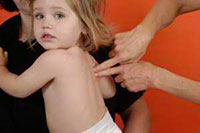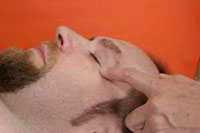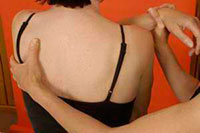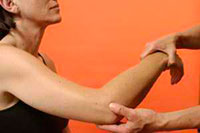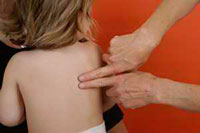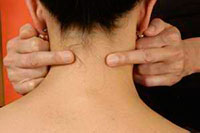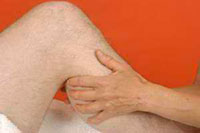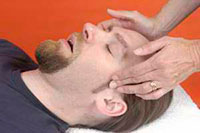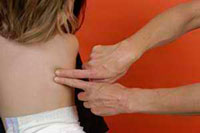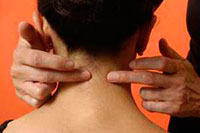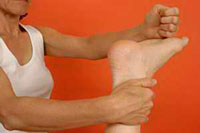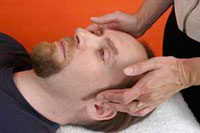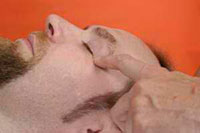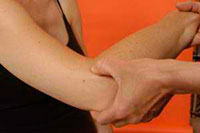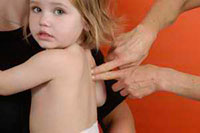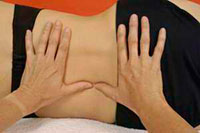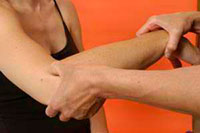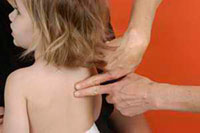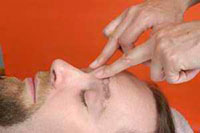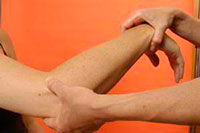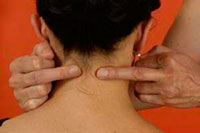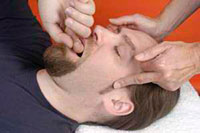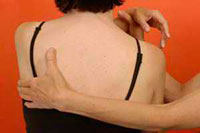BOWEN ARTICLES
A holistic way to treat injury
A seriously ill man in a wheelchair is back on his feet, with help from the Bowen technique, writes Isabel Conway (The Irish Times - October 2, 2012).
When Breda McQuaid first met Danny Spiessens he had paralysis from the chest down. He had neither bladder nor bowel control, had lost almost half his body weight in a matter of weeks and was skeletal thin. “He looked desperately unwell,” she says of the previously healthy successful Belgian businessman who owns a chain of hair salons around the Flemish city of Antwerp.
In the summer of 2009 Danny Spiessens and his wife Anniek were on a beach holiday in Tuscany when he developed flu-like symptoms. “I got that shivery feeling, I was aching and thought it was flu. But on the third night everything felt blocked and I was shutting down, I could no longer move my legs or feel any sensation in them, it was absolutely terrifying.”
Overnight Spiessens, now 49, was crippled with an acute form of transverse myelitis, an infection of the spinal cord. How he caught the infection is a mystery; he believes it could have been from swallowing infected water while swimming in a rock pool in Mexico earlier that year, or through eating contaminated shellfish on holiday, or from an old back injury. He was taken to hospital in the Italian city of Pisa where he suffered septic shock – total body failure – several times. Critically ill in those early days, it was many weeks before he could be taken back to Belgium.
Eventually he returned, to a rehabilitation centre in Antwerp where he was told he could expect to remain in a wheelchair for the rest of his life. “I was always so healthy and active, skiing, horse riding, doing sports. I felt my life was stolen away from me. But I am by nature a very positive person and I was determined to get better,” he recalls.
Just after his return Spiessens’s wife, a former intensive care nurse, told a regular client, while working in one of their hair salons, about her husband’s illness. Recently qualified as a Bowen technique practitioner, Breda McQuaid, from Moybridge in Co Monaghan, believed she might be able to help. She had already treated some family members including her 85-year-old father, her 80-year-old mother and friends for a variety of ailments with great success during her training.
Spiessens was to be one of her first real clients and to date his recovery is the most extraordinary she has encountered. “I had never heard of the Bowen technique until Breda started treating me but I was willing to try anything to try to walk again,” says Spiessens. “But I could feel a difference from the moment she started treating me. Actually I was calling it Breda’s ‘hocus-pocus’ but each time she treated me I could feel the improvement. It was truly astonishing how my legs were strengthening and my general health was improving steadily.”
Breda McQuaid (46), a mother of four who has lived with her Irish husband in Belgium for the past 14 years, is a former general nurse and trained in London as an accident and emergency nurse practitioner. She hadn’t heard of the Bowen technique until she suffered back pain following a car crash in Antwerp. She turned to it as a last resort after having physiotherapy for over a year, still needing to take strong pain killers. “I found a lady who did the Bowen technique. After that first session I was pain free for five days and following the third one the pain stayed away for nine months. I had a top-up session then and it has never come back.” She felt the treatment was so remarkable that she resolved to train as a therapist herself at the Bowen Training College in the Netherlands.
When McQuaid started treating Danny Spiessens he was bedridden and weighed just 48kgs. He responded to the first treatment, experiencing sensation in his right leg, and by the fifth treatment in October 2009 he was walking with the aid of a walking frame, had gained weight and muscle and had regained bladder control. McQuaid continued to treat him every two weeks and by June 2010 Spiessens was able to drive a car again and was enjoying remarkably improved health. He takes up the story: “Doctors in Italy and Belgium were so surprised, they believed I would probably be in a wheelchair always. One of them said it was a miracle. I know that the Bowen therapy helped to make me walk and be healthy again. But it was not the only factor, in my opinion. “I doggedly persisted, making myself stand and then take those first steps, telling myself that if I could walk a step or two then I could build it up and walk a kilometre one day.
“I take loads of vitamins and instead of alcohol, though I am allowed the odd glass of wine, I swallow an awful lot of fish oil.” His daily swimming routine has also helped develop stamina and physical fitness. Now only using a walking stick on the street, as a psychological prop, his dream is to be able to put on his skis one day and take on the challenge of a gentle slope. “I know, if I keep making this progress I can manage the ski turns. Not so long ago I felt my life was over, now I have it back again.”
BOWEN: THE FACTS
The Bowen technique is a holistic approach to pain relief and injury recovery, claiming to tap into the body’s blueprint and reset the body to heal itself. The potential for recovery is stimulated by a series of gentle moves over muscles and tendons on specific areas of the body. Usually a patient needs no more than three or four sessions.
The trained practitioner uses thumbs and index fingers making gentle rolling type moves across precise points on the body. These moves aim to disturb the muscles, connective tissue and subtle energies, sending a message to the brain, which responds by starting the repair process, creating balance and stimulating energy flow. Bowen therapy critics argue that studies backing its claims have only been carried out on small numbers of patients, and that there is a lack of scientifically-controlled research and published evidence.
The original article can be viewed here.
